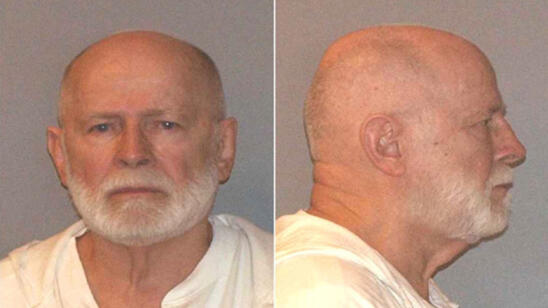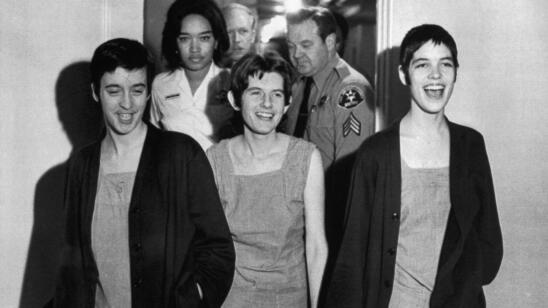When he was 20 years old, Cornell “Nate” Alston didn’t know if he’d ever see the outside of his prison cell again. He’d been convicted of murder in the second degree and attempted robbery in the third degree, for his role in the group stabbing of Arthur K. Watt. He’d been sentenced to 18 years to life in prison.
With no fixed date of departure, the idea of freedom was abstract. For decades, he bounced between institutions.
“I was all over the place,” Alston tells A&E True Crime. “Sing Sing, Green Haven, Woodbourne. Just about every New York State prison.”
Then, one Friday in May of 2012—33 years after his sentencing—Alston got notice from the parole officer at Fishkill (New York) Correctional Institution, where he was then serving time. There was a letter awaiting him downstairs: results from a recent parole board hearing.
It had been Alston’s 10th such hearing. Nine other times, parole had been denied.
The hearings were difficult to make sense of. They were always short—about five to 15 minutes of questioning—and oftentimes, Alston would leave the meeting certain that he’d “made it,” only to have his hopes come crashing down in writing, days later.
“They’ll trick you in the hearing, tell you that you’re a great candidate [for release],” Alston says. “Then you get the letter saying you’ve been denied for two years.”
But on his 10th parole board hearing, “everything felt different,” Alston says. The questions the board asked him felt gentler.
When he went to pick up this most recent parole board letter, there was a line out the parole officer’s door: other inmates who’d also had hearings, similarly awaiting judgement on their freedom.
Alston took his envelope into a stairwell, where he could open the decision letter and read the top line away from prying eyes.
Release date: June 28, 2012.
In a little more than one month, he’d be free.
“It was unbelievable,” he says. “I kept reading it, several times over. And I see one of my friends coming down the stairs, and he says, ‘What happened? You got it?’ And I said, ‘I made it. I made it.’ And people in the hallway started saying, ‘Nate made it, y’all’, as I’m making my way back [to the cell].”
Avoiding Trouble During the Final Days in Prison
According to Alston, the initial elation of having his release date was followed by a swirl of negative emotion.
“Fear comes. Anxiety. Because, you know… am I ready? There’s the anticipation of that date. And then you try to stay away from anything that would keep you from that date.”
According to Alston, that “anything” largely consisted of others’ provocation. When prisoners are given a release date, those in the prison who don’t like you will try to create trouble for a pending release, so that you “lose that date.”
That can mean prisoners and staff alike.
“Sometimes you’ll get a CO [commanding officer] who will really start giving you a hard time now because he wants to see you snap. Since you’re going home they think, ‘This is my chance to jig at him.’ … But I was pretty sturdy, pretty well-liked.”
Alston said he began preparing for departure by getting rid of the material possessions he’d accrued behind bars.
“It’s kind of an unwritten rule you leave a lot of stuff behind with [other] people,” Alston says. “I left my typewriter with a friend. You leave magazines, books, tapes, for your cassette player, radio. Some people leave their watch. But I brought mine home. It was a pretty expensive watch—a good Timex.”
Changing Routines, Staying the Same
Alston says over his three-plus decades in prison, he’d often note inmates would stop playing sports once they “had their date.” According to Alston, the thinking was that prison athletics can lead to a freak injury—and that going into the world-at-large after decades of incarceration is challenging enough, as is, at full health.
But for Alston, his thinking was the opposite: He started working out more when he was going to get out.
“I wanted to be a little more buff,” he says.
He also starred in a prison theater production: August Wilson’s Ma Rainey’s Black Bottom.
As his date of departure approached, rehearsals ramped up. He and the rest of the prison cast performed their show four days before his release into the world.
“You don’t know if it’ll affect your acting,” Alston says, reflecting on the experience. “But it was great. It just made the experience that much better.”
Crossing Ts
Prisoner clothing is tightly regulated. But in the weeks leading up to his release, Alston called his older sister, who delivered his day-of-liberation outfit to Fishkill, where prison officials stored it until his release date: a pair of khaki pants, a brown shirt and black shoes. She also told him that he was welcome to come stay with her at her apartment in Queens, after his release.
Alston was grateful to have a place to live already lined up. Many ex-offenders have to resort to living in shelters, post-release.
As the date approached, Alston started having recurring anxiety dreams—about being stuck in the prison, his release date coming and going without being let go.
“Me in the penitentiary. Me not getting out. Maybe it was the subconscious saying, ‘Is this real?'”
He started regularly calling a friend on the outside, Brent, whom he’d met while doing time—a volunteer prison educator who had taught him theater arts and would be waiting for his release.
“We were talking about dinner. Sitting around, on his balcony by the beach, being able to talk. Writing together.”
Fortunately for Alston, finding employment wasn’t an issue. Through a fellow inmate he’d gotten a job offer at a bakery in Long Beach, New York—making donuts and cookies and tending to the shop.
“I was blessed,” Alston says, to have that job waiting for him. He still works at that bakery today.
Alston acknowledges that having a job to transition to after being released from prison isn’t the norm. While some prisons have programs that help offenders find employment for their lives beyond bars—a huge factor in helping reduce recidivism—it’s not always a requirement that an inmate have a job lined up.
With housing and a job set up, there was just one more obstacle to clear—the prison’s goodbye ritual.
According to Alston, fellow prisoners will throw “blanket parties” for inmates on their last day behind bars.
“Usually they try to sneak up on you, throw a blanket over your head, and rough you up a bit,” Alston explains. To avoid that, Alston lied to the prisoners about his release date. He was scheduled to leave on a Wednesday, but told the others he was leaving two days later, on Friday.
“They figured they’d do it Thursday night, Friday morning…right before I got called.”
Instead, Alston had left them a note in his cell: “Haha! You thought you were going to get me.”
He’d changed clothes, gotten a $600 cash-out from his commissary account and walked through the front gate—finally a free man, after more than three decades behind bars.
Related Features:
What It’s Like to Work an iPhone After Being in Prison for 25 years
From Cons to Coders: How Some U.S. Prisons Are Teaching Tech
How Inmates Help Solve Cold Case Murders While Playing Cards
Got a Parent In Prison? This Drug Lord’s Son Wants to Help


